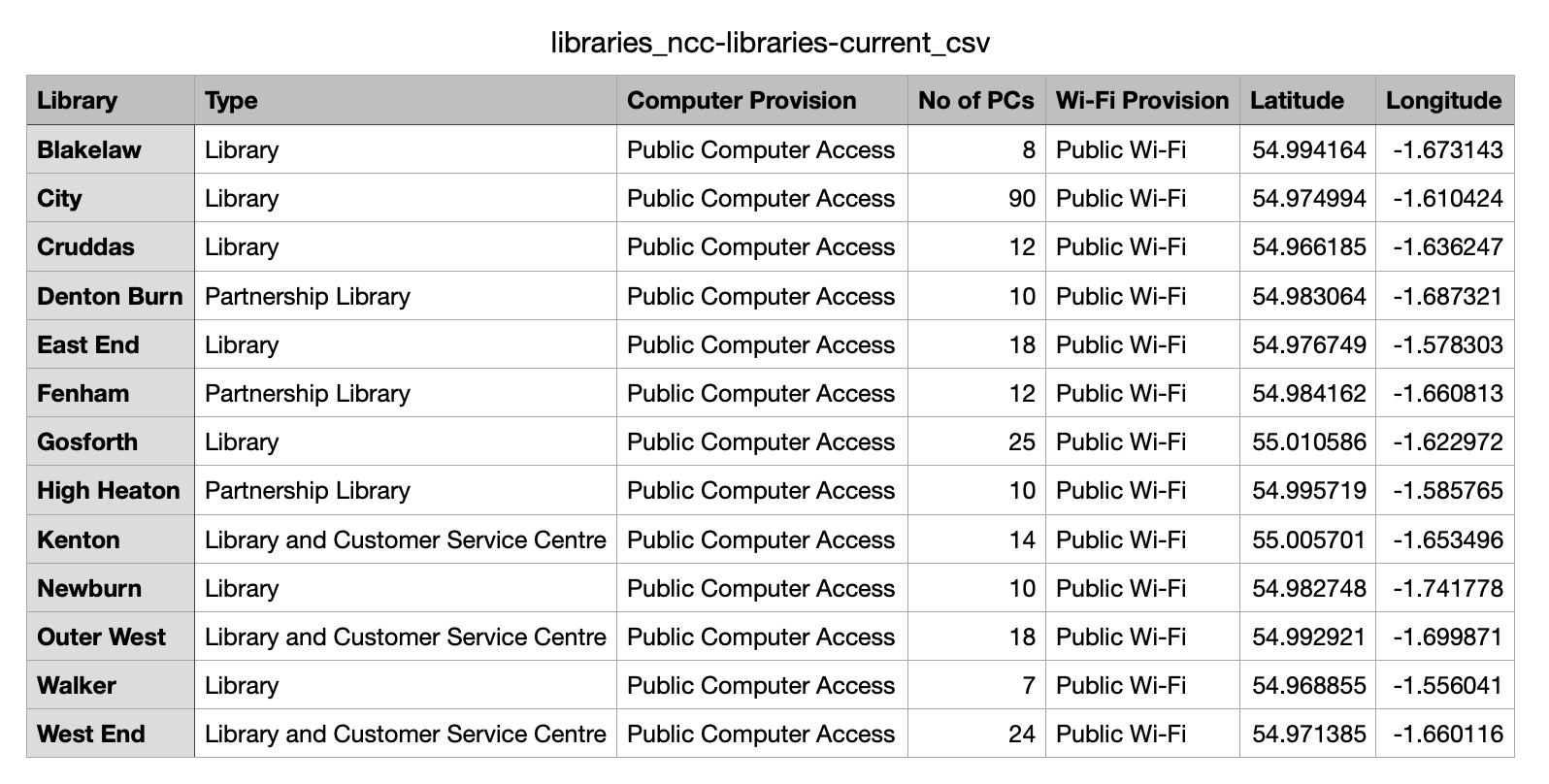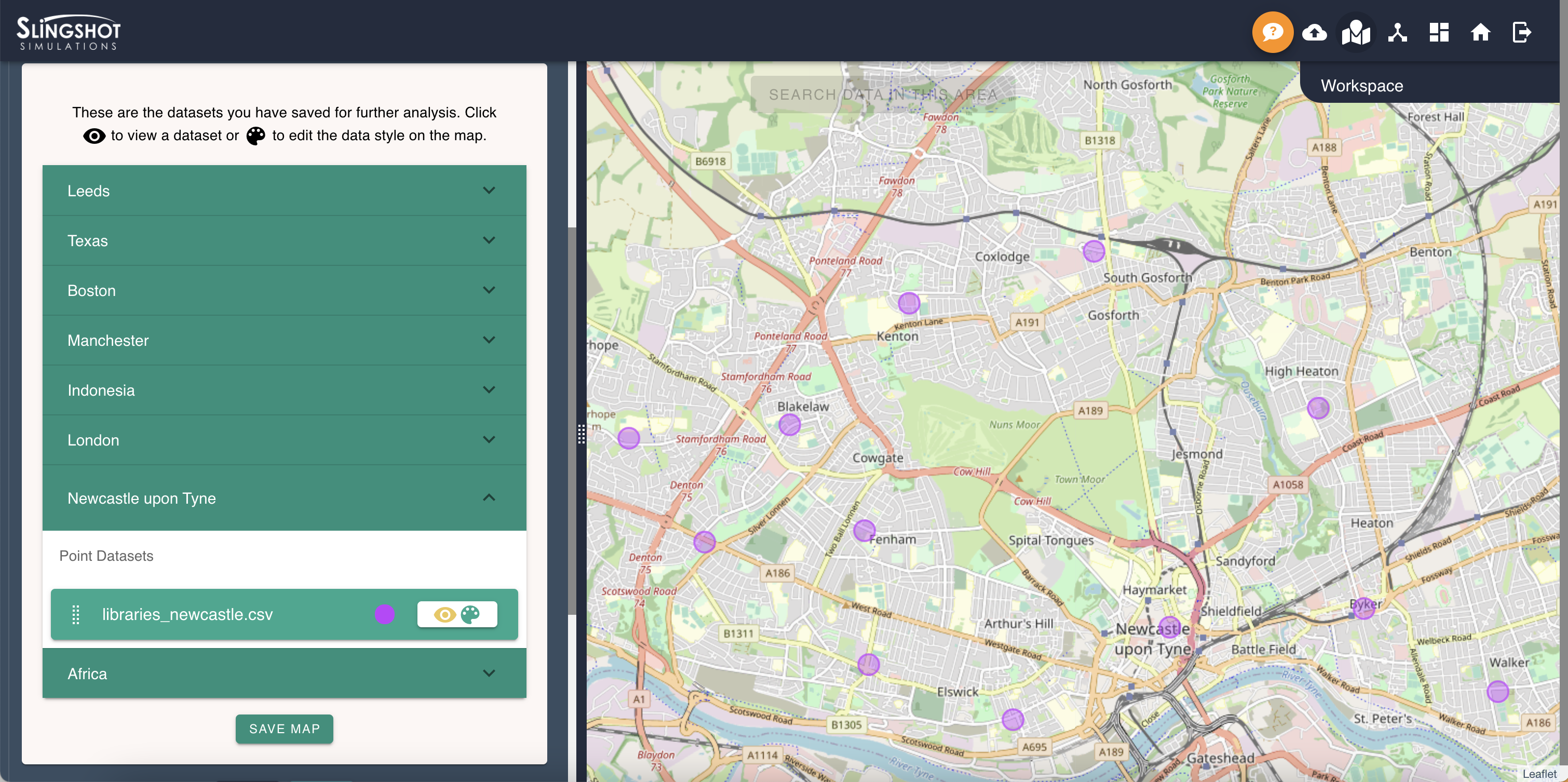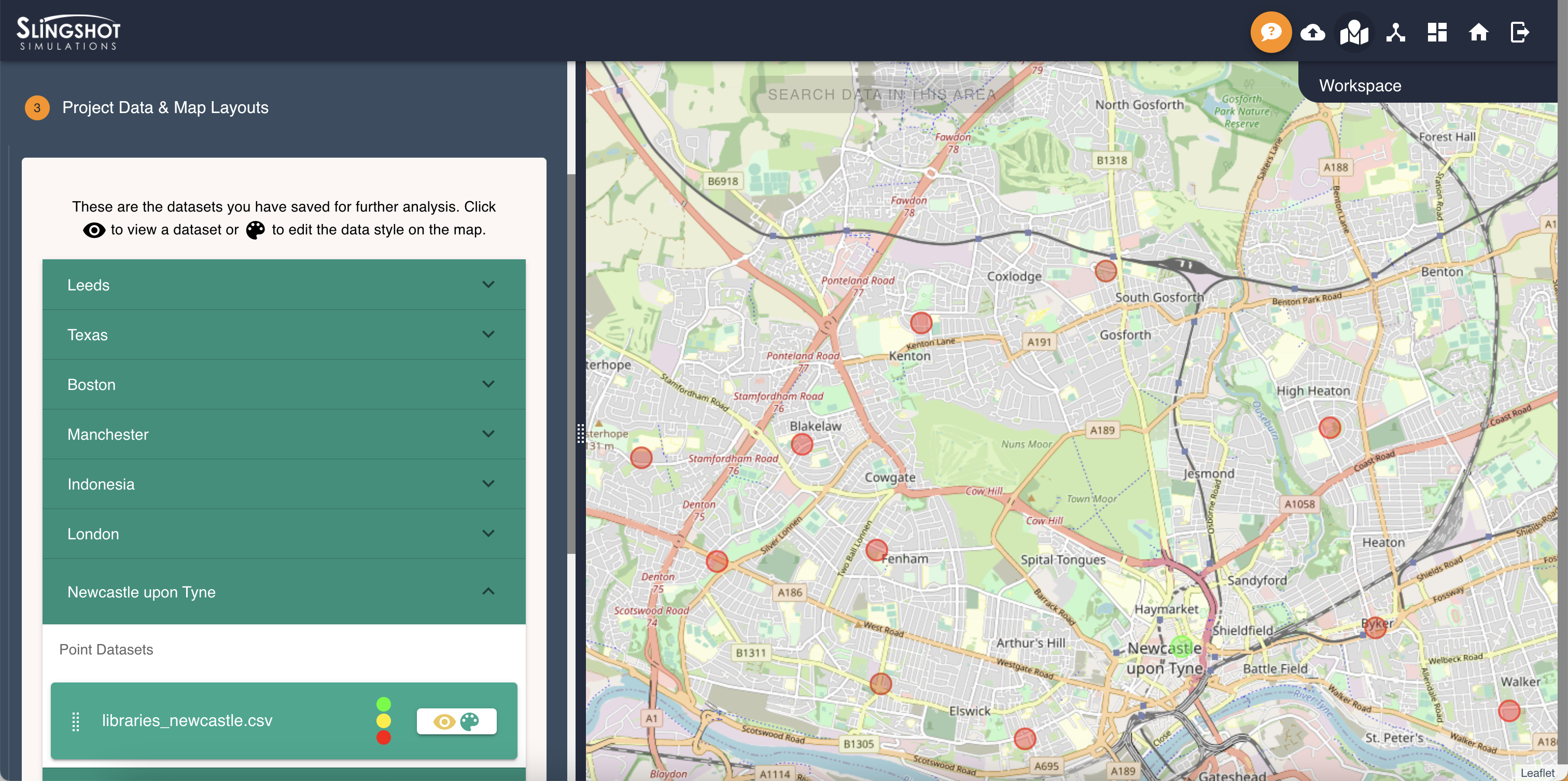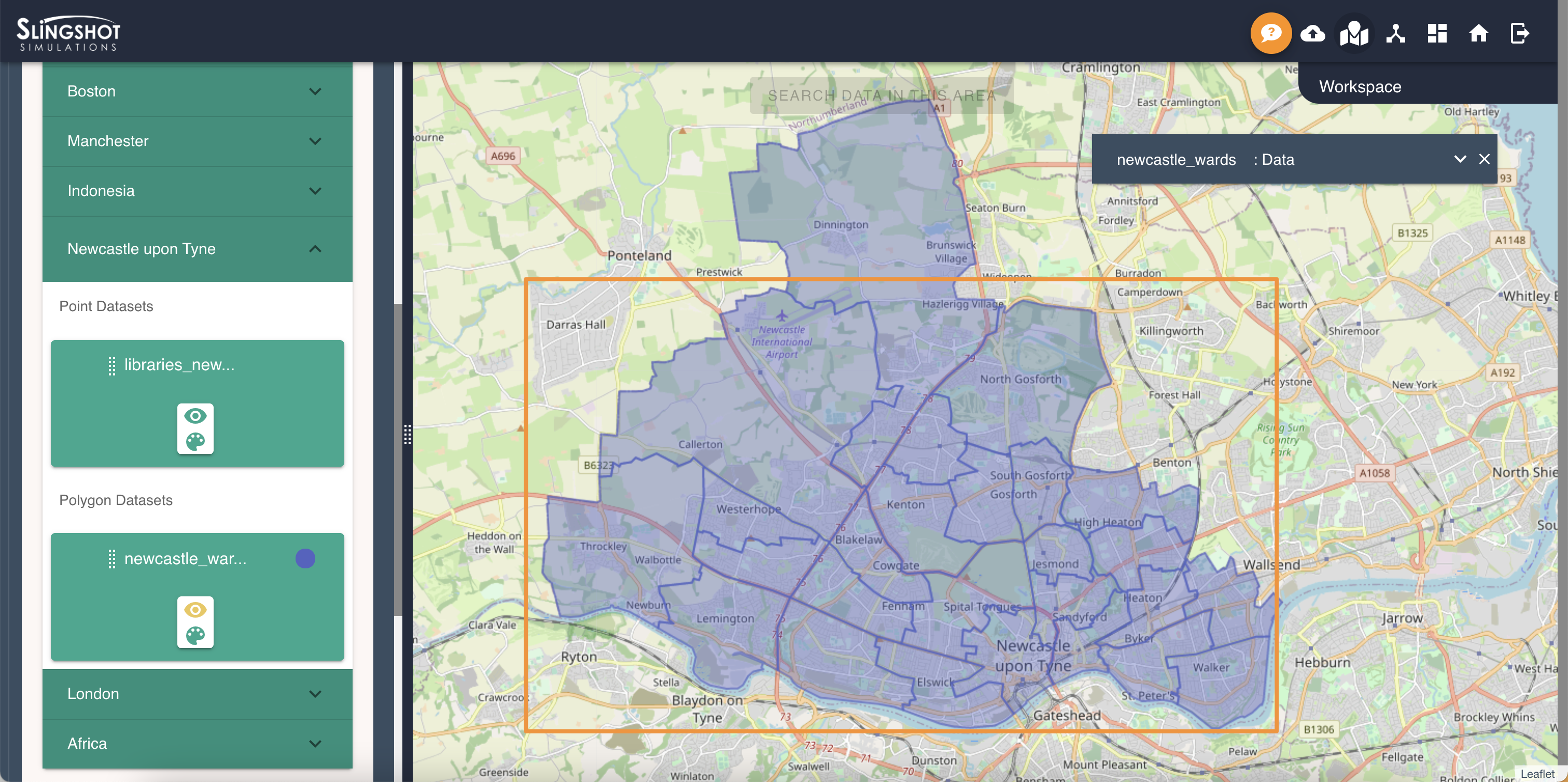Geospatial technologies are tools which allow users to geographically map and analyse locational data. This data is typically gathered from sources such as: census resources, satellite imagery, weather data, drawn images and social media, among others.
In order to fully incentivise and utilise collected data for academic work, it is key to ensure that the data is presented in a beneficial clear way, shared, analysed, and combined with relevant contexts and sources.
But how can geospatial technology improve your work? And how can you easily utilise the Compass Platform to present it?
Create your FREE Compass Platform account here: Compass (compassengine.com)
1) Mapping
After your data collection, you may start with a structured table of your findings like the below. However, it is more difficult to infer meaning from this, as the data is not clarified into an explicit visualised form. The tabular example below contains data on libraries within Newcastle, their number of PCs and their exact location. We can see that the data is relatively unclear within this structure.

The Compass platform can allow you to automatically map out the locations of the libraries into a geospatial form which clearly presents their whereabouts on the map.

2) Visualisation
Data visualisation allows us to represent both the data values and the location within the map to further communicate through it. For example, the below demonstrates that the City Library has a substantial number of PCs. This highlights its location geospatially, allowing us to visualise the quantifiable features in a logical clear way. The predetermined colours rank the data within the range of the minimum and maximum values.

3) Analysis
In analysing the data, we can combine different datasets. Such as the Newcastle wards and the public libraries to aggregate the data and allow us to understand how each region is being provided essential services.

The following colour coding allows us to determine quickly which areas are well provisioned and, subsequently, which are underperforming. Therefore, Slingshot’s geospatial technology has automatically and quickly mapped out the data into a simply presented form, allowing us to draw fast conclusions from multiple datasets. It also allows us to analyse the geospatial data, applying relevant criteria and simulating tests.

Use the following link to create your community account for FREE and start uploading and mapping your own data: Compass (compassengine.com)
